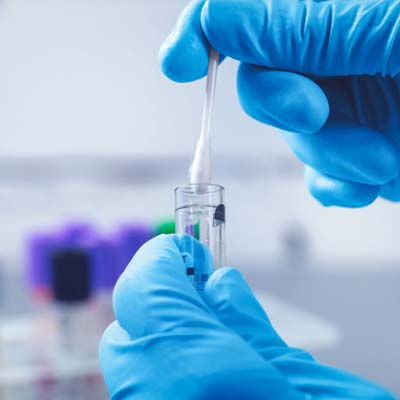Breast Reconstruction
Most patients who decide to undergo reconstruction find that having the procedure makes it easier for them to restore their body image, resume normal dress and activities and recover faster psychologically.
Breast Reconstruction Options
There are multiple options for breast reconstruction. Some utilize an implant, others use only your own body tissue in what is called a “flap” procedure, and rarely both are employed. The implant option is often considered the “easiest” option because the surgery is the shortest and does not take tissue from other areas of your body.
Some of the flap procedures take longer and are more complex, but may require less surgery over time. There is no best option; every patient has different issues to consider.
All breast reconstructive procedures can be performed safely if your general health is good, even if you need chemotherapy and/or radiation. Your surgeon will discuss with you your overall health, your breast size and shape, activity level, and possible treatment beyond surgery, and expectations.
Immediate and Delayed Breast Reconstruction After A Mastectomy
Many patients have reconstruction done at the time of the mastectomy, called immediate reconstruction, but reconstruction can be performed at any time after the initial procedure, called delayed reconstruction.
In general, the results are superior when cancer surgery and reconstruction are done at the same time, but the stages can be executed according to a patient’s needs and over a flexible timeframe.
Patients who have reconstruction at the time of mastectomy usually feel better about their recovery. However, for some patients, it may be better to delay the reconstruction due to the extent of the cancer.
Before you consider breast reconstruction, you must first speak with your breast surgeon who will work closely with you and a plastic and reconstructive surgeon in order to help reach a holistic decision regarding breast cancer treatment and possible reconstructive options.
Flap Breast Reconstruction Surgery
Flap reconstruction uses a piece of body tissue – usually skin, fat, and muscle – to recreate a soft, natural-looking breast. Although flap surgery takes longer than implant surgery, the risk of complications can be minimal and the need for future surgery limited.
Most patients will spend no more than two to three days in the hospital and will be walking and eating within a day. The most common type of flap used in breast reconstruction is taken from the abdomen, although other donor sites (thigh, buttock, etc.) may be considered.
DIEP Flap Breast Reconstruction The DIEP (Deep Inferior Epigastric Perforator) flap breast reconstruction represents the state of the art in breast reconstruction. Replacing the skin and soft tissue removed at mastectomy with soft, warm, living tissue is accomplished by borrowing skin and fatty tissue from the abdomen.
A slim incision along the lower abdomen is made much like a tummy tuck. The necessary skin, soft tissue and tiny feeding blood vessels are removed. These tiny blood vessels are matched to supplying vessels at the mastectomy site and reattached under a microscope.
The abdomen is the most common donor site, since excess fat and skin are usually found in this area. In addition to reconstructing the breast, the contour of the abdomen is often improved much like a tummy tuck.
Tissue Expansion With Implants
Implant reconstruction often requires more than one procedure in order to make enough space for an implant. Implant reconstruction is usually combined with a procedure called tissue expansion, during which saline (salt water) is slowly added over a period of time to a type of implant called a tissue expander.
When the space is large enough to fit an implant that will match the natural breast, a permanent implant then replaces the expander one. The procedures for placing expanders and implants are usually short and do not require overnight stays in the hospital.
Implants are safe and the ones used today are made of saline or silicone. If a saline implant leaks, the fluid is absorbed by the patient’s body with no harm.
A silicone implant feels more like a natural breast and recent studies show that silicone is also safe, but requires an understanding of additional risks. If you are considering an implant reconstruction, your doctor will discuss all of the risks and benefits with you in detail.
Nipple Reconstruction Surgery
Most patients undergo nipple reconstruction after breast reconstruction. This is usually a separate outpatient procedure that can be performed with minimal anesthesia. Recovery is not difficult, although the final outcome may require a tattoo in order to enhance the color match.








